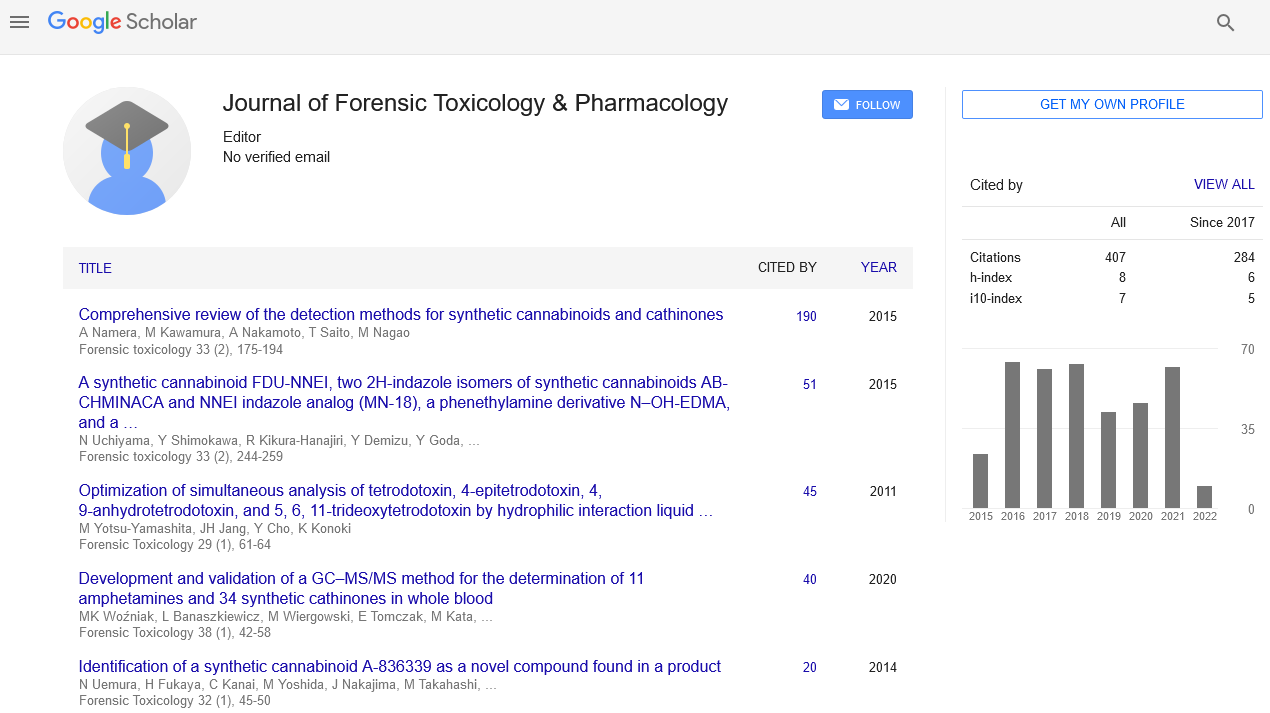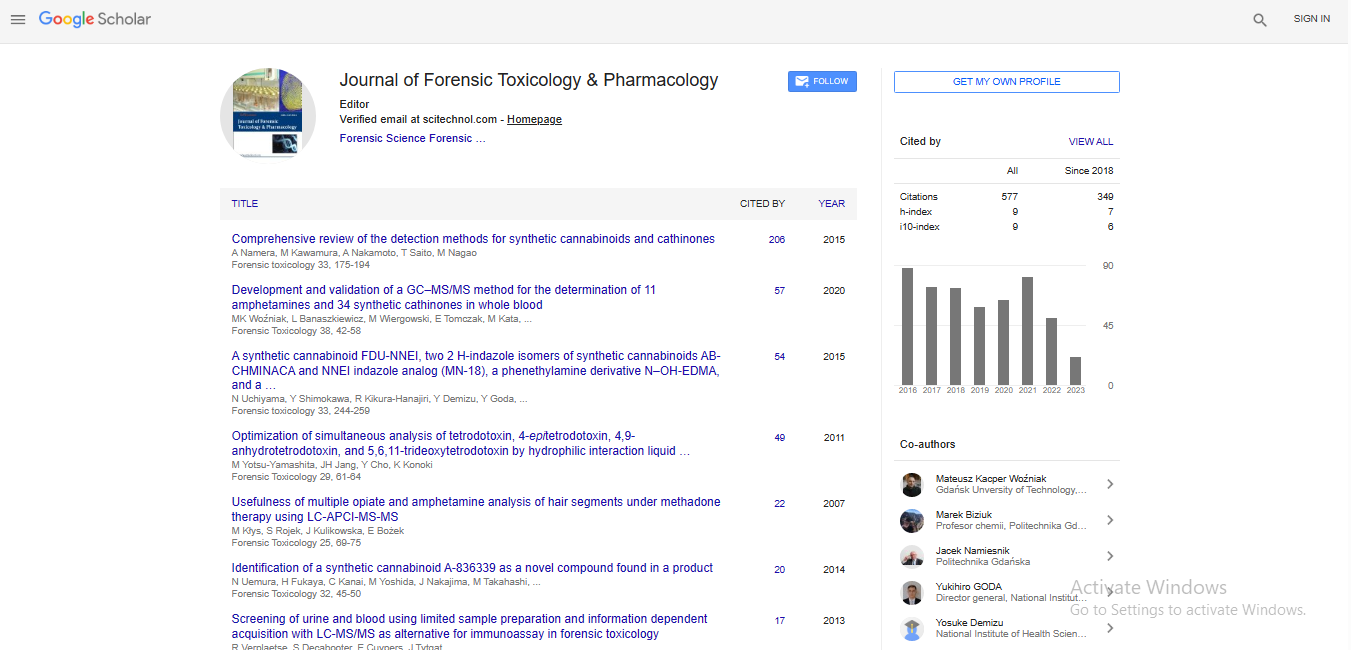Trends in acute myocardial infarction among patients 18 to 45 years old admitted at Makati medical centre from 2010 to 2014
Maria Stephanie Alessa R Sales and Juan Dionisio Foronda
Asian Hospital and Medical Center in Muntinlupa, Philippines
: J Forensic Toxicol Pharmacol
Abstract
Background: Although AMI mostly occurs in persons older than 45 years of age, young adults are an important group to examine for the purpose of risk factor modification and secondary prevention. Objectives: This study primarily sought to determine the prevalence, clinical features and in-hospital outcomes of young patients with acute myocardial infarction in Makati Medical Center during the period of surveillance. Methods: This is a single-center five-year retrospective cross-sectional chart review wherein the Makati Medical Center Cardiac Catheterization Laboratory Census from January 2010 to December 2014 was utilized. All adult patients, more than 18 years but less than 45 years of age, admitted for acute myocardial infarction those underwent coronary angiography were being eligible for inclusion. Results: The final study sample consisted of 94 patients. Males represented majority of young patients hospitalized with acute myocardial infarction (males, 85.1%; females, 14.9%). The mean age of the patients was 39 years old. Among the co-morbidities presented, dyslipidemia was the most prevalent (66%), with 41.5% being newly-diagnosed. Majority of the patients were obese (62.6%), with the mean BMI at 27.32 (Obese Class I). Smoking (45.7%) and hypertension (50%) were other major risk factors. ST elevation was present in 50 (53%) of the patients. Single vessel disease was most frequent, with the left anterior descending artery (54.3%) most commonly affected. Percutaneous coronary intervention was performed in 64% of the patients. All-cause mortality was seen in only 2.1% of the study population. Conclusion: Myocardial infarction in 45 years of age and less is almost exclusively seen in male. Dyslipidemia, obesity, and smoking are major risk factors. STEMI is the main presentation. Single vessel disease is more frequent, with PCI as the main revascularization strategy utilized. Inhospital mortality is low.
Biography
E-mail: msar.sales@gmail.com
 Spanish
Spanish  Chinese
Chinese  Russian
Russian  German
German  French
French  Japanese
Japanese  Portuguese
Portuguese  Hindi
Hindi 
